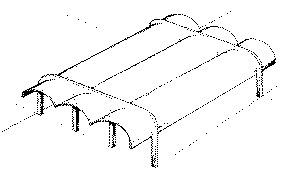

A barrel shell carries load longitudinally as a beam and transversally as an arch. The arch, however, is supported by internal shears, and so may be calculated.
Here is a photograph of a north lignt barrel shell.
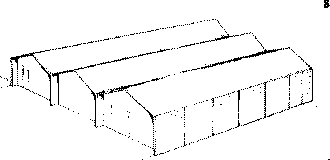
The elements of a folded plate structure are similar to those of a barrel shell except that all elements are planar, and the moments in the slab elements are affected by the differential movement of the joints.
For the structure shown, the end supports and the side supports are both complete walls
To see a picture of a folded plate click HERE
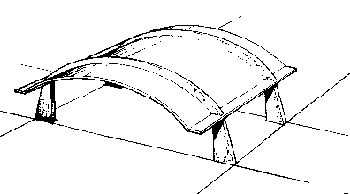
The short shell carries loads in two ways: (1) As an arch carrying load to the lower elements. and (2) As as a curved beam to the arches. The thickness of the shell can be quite thin due to these properties.
Here is a photograph of a short shell
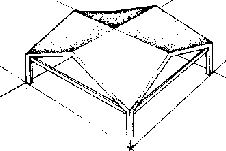
The hypar carries load in two directions. In this case, the diagonal element that sags is in tension, and the other element is an arch and is in compression. These forces must be picked up by the side ribs and delivered to the supports.
Click here to see one of the possible types of hyperbolic paraboloids.
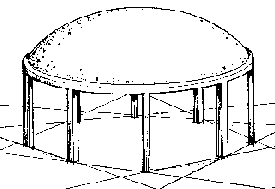
Click on Dome to see a photo of a dome

A translation shell is a dome set on four arches. The shape is different from a spherical dome and is generated by a vertical circle moving on another circle. All vertical slices have the same radius. It is easier to form than a spherical dome.
The stresses in a translation shell are much like a dome at the top, but at the level of the arches, tension forces are offset by compression in the arch. However there are high tension forces in the corner.
To see a photograph and a description of a translation shell, click HERE.